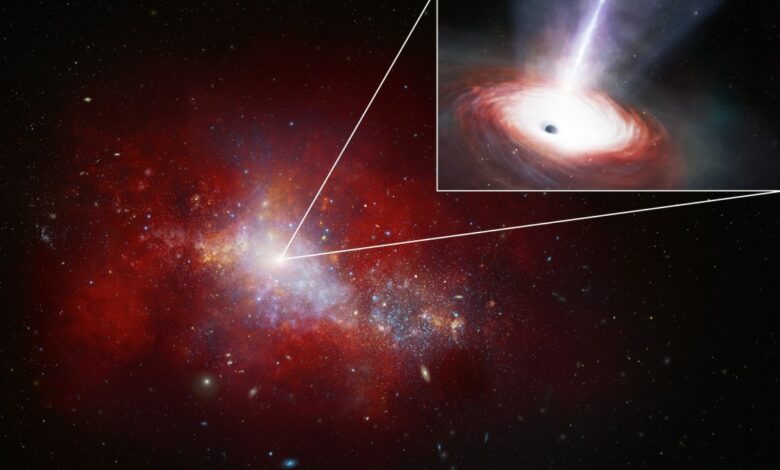Astronomers discover that a black hole devours matter at incredible speeds!

Using data from NASA’s James Webb Space Telescope (JWST) and the Chandra X-ray Observatory, a team of astronomers has identified a black hole that is consuming matter in a young galaxy at a record rate. This black hole, called LID-568, is found in a galaxy that is believed to have formed just 1.5 billion years after the Big Bang. By observing this rapid growth in the early universe, scientists are beginning to understand how supermassive black holes may have formed faster than previously thought.
A new observation technique
The research was led by Dr. Hyewon Suh of the International Gemini Observatory at NSF NOIRLAb. The research team found LID-568 within a group of galaxies that shine brightly in X-ray wavelengths despite being dim in the visible spectrum. Their findings were based on a unique approach. The research indicates that, instead of using traditional slit spectroscopy, the team used JWST’s integral field spectrograph in the Near Infrared Spectrograph (NIRSpec) to capture data from every pixel within the target area. This method allowed precise positioning of the black hole, revealing large outflows of gas around it.
Dr. Emanuele Farina, co-author and NOIRLab astronomer, commented on the strategy, saying that this technique was “essential to capture the weak signals from LID-568.” This outflow suggests that LID-568 could grow during intense, short-lived periods of rapid feeding.
Implications for black hole growth
Dr. Julia Scharwächter, also from NOIRLAb and co-author of the study, noted that the black hole’s growth rate exceeds the Eddington limit, which defines how quickly a black hole can accumulate mass. Observing LID-568’s intense consumption of matter has opened a window into how black holes can grow beyond expected limits.
The team’s findings could help explain how black holes grew so large in the early stages of the universe. By continuing their studies with JWST, the researchers hope to gain further insight into the forces behind this rapid growth and understand the factors that allow black holes to exceed established theoretical boundaries.




